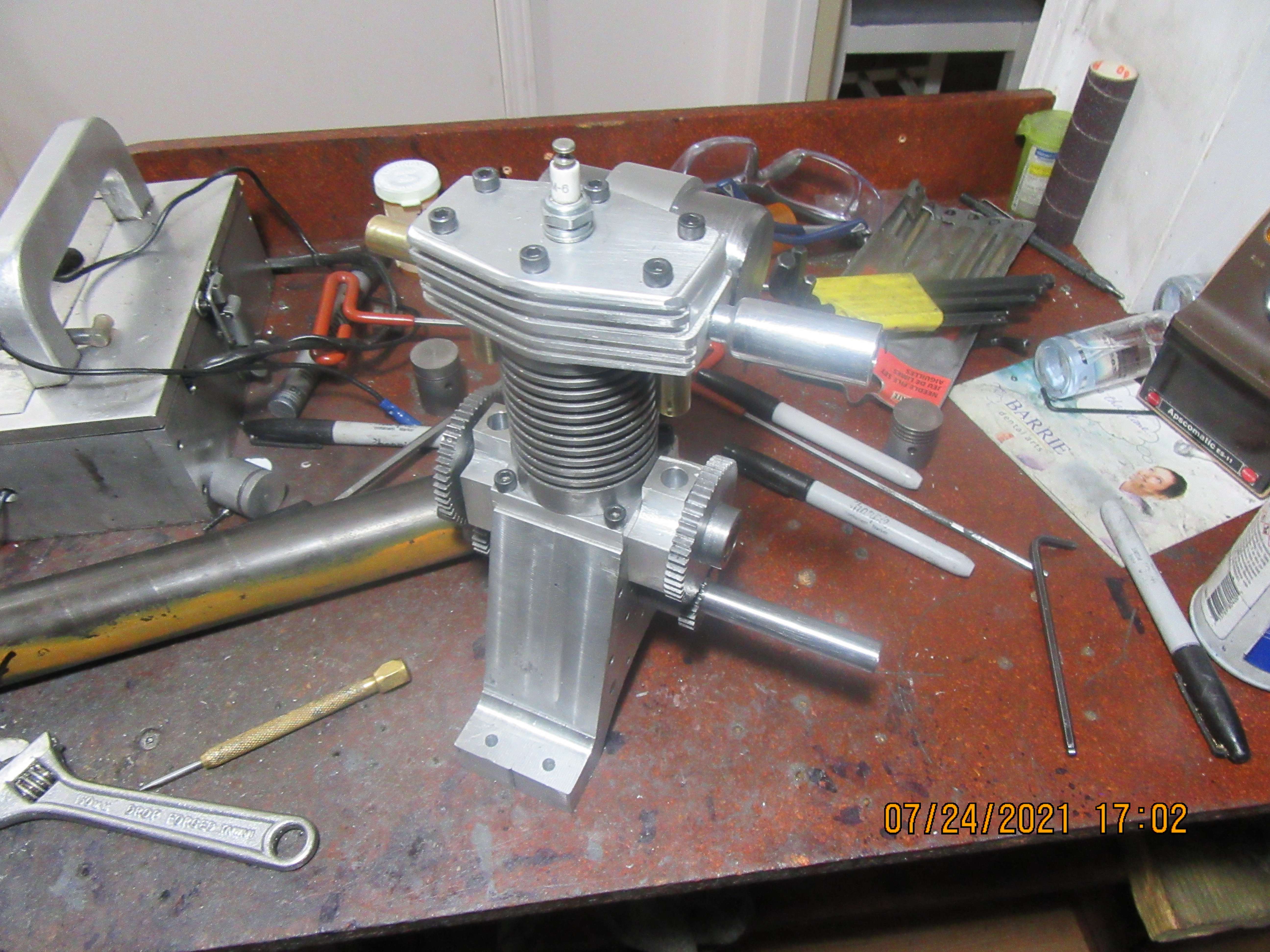I ran into something a bit strange yesterday. When I threaded the ends of the exhaust and carb adapter for the engine yesterday, the parts were held in the lathe chuck and the die was held in a collet in the tailstock chuck. No problems were encountered, I even ran a standard 3/8"-16 nut up the thread to ensure that everything was Kosher. When the cylinder head was tapped 3/8"-16 it was held in the milling machine vice and threaded by hand with a tap and standard handle. After screwing things together yesterday afternoon, they were crooked!! It doesn't show in the picture I posted, but they were quite visually crooked. I didn't want the Loctite to set up, so I disassembled things. This morning I held the cylinder head in my mill vice and a tap in the milling machine spindle and turned the spindle by hand, and the tap was cutting metal. I ran the tap in until it bottomed out, removed it, and cleaned up the ends of the cylinder head. I then held the inlet (carb adapter) in the chuck of the milling machine, applied a bit more Loctite and turned the spindle until the shoulders on both pieces were touching each other. I must have had the tap turned at an angle when I first threaded these parts. I would stand and deny that I would make such a dumb mistake, but I can't figure out what else it could have been.




















![MeshMagic 3D Free 3D Modeling Software [Download]](https://m.media-amazon.com/images/I/B1U+p8ewjGS._SL500_.png)































































